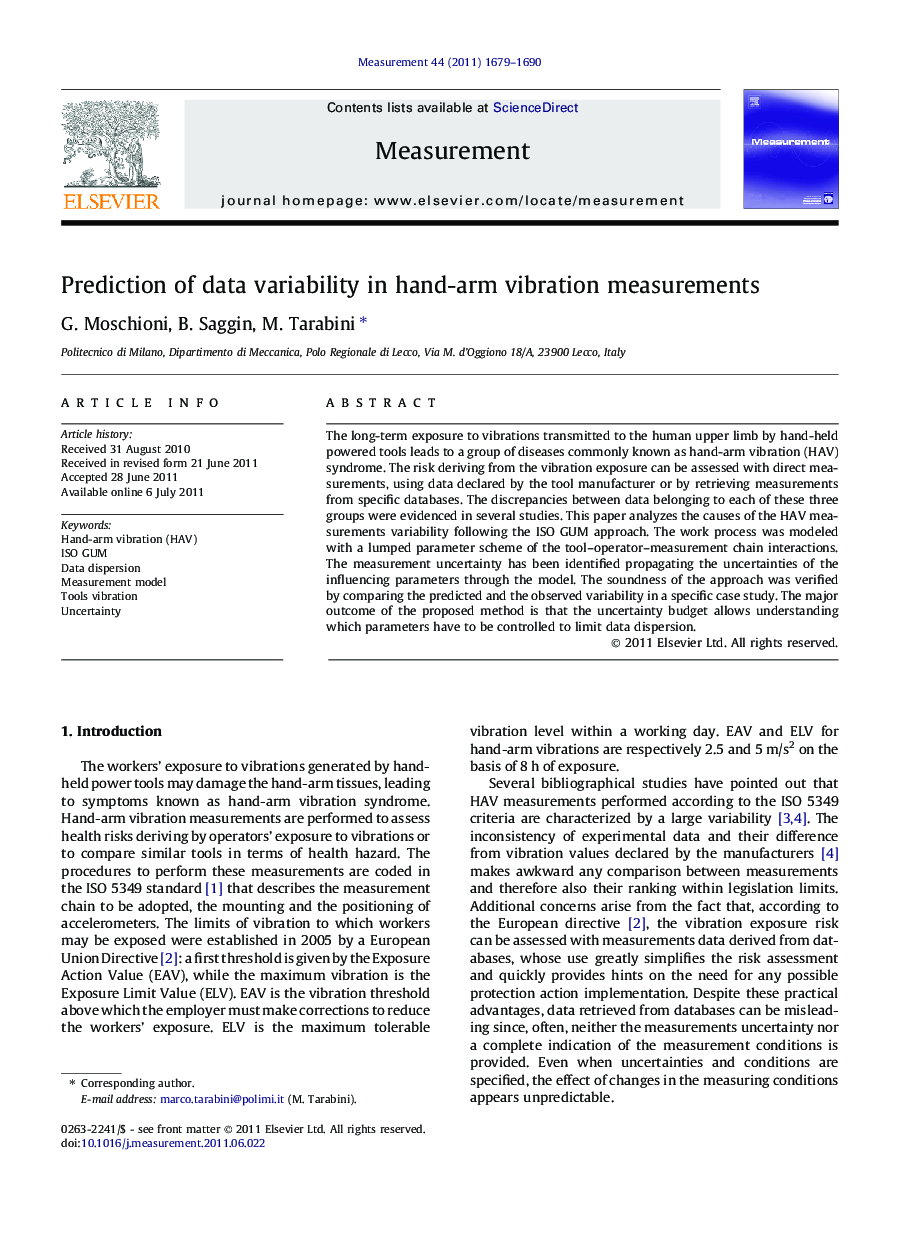| Article ID | Journal | Published Year | Pages | File Type |
|---|---|---|---|---|
| 727619 | Measurement | 2011 | 12 Pages |
The long-term exposure to vibrations transmitted to the human upper limb by hand-held powered tools leads to a group of diseases commonly known as hand-arm vibration (HAV) syndrome. The risk deriving from the vibration exposure can be assessed with direct measurements, using data declared by the tool manufacturer or by retrieving measurements from specific databases. The discrepancies between data belonging to each of these three groups were evidenced in several studies. This paper analyzes the causes of the HAV measurements variability following the ISO GUM approach. The work process was modeled with a lumped parameter scheme of the tool–operator–measurement chain interactions. The measurement uncertainty has been identified propagating the uncertainties of the influencing parameters through the model. The soundness of the approach was verified by comparing the predicted and the observed variability in a specific case study. The major outcome of the proposed method is that the uncertainty budget allows understanding which parameters have to be controlled to limit data dispersion.
► We model the vibration source–upper limb interaction with a mobility approach. ► We propagate uncertainty in the model with the ISO GUM. ► We show the approach soundness comparing predicted and observed data. ► We identify the parameters to be controlled to limit the HAV data dispersion.
